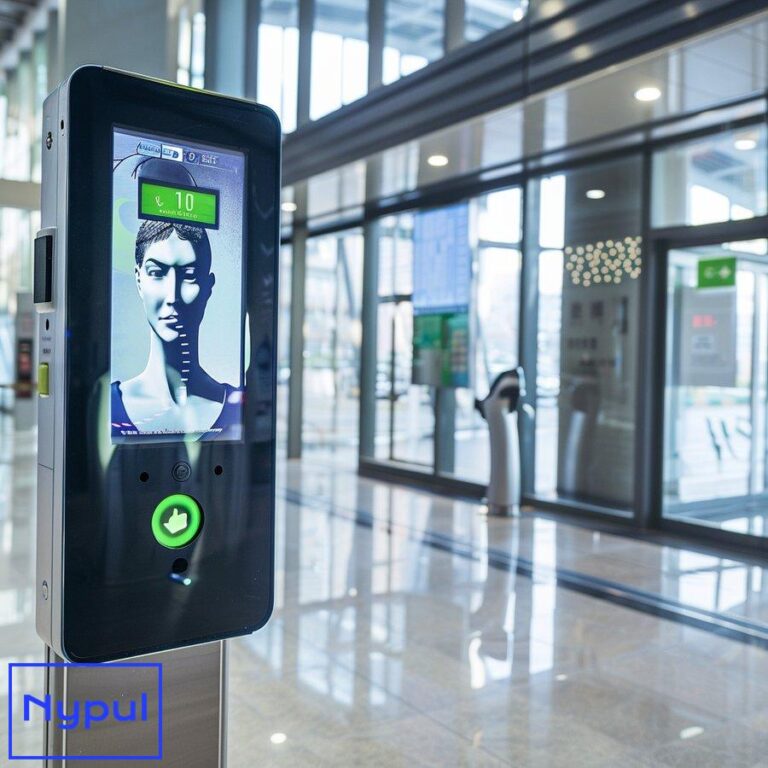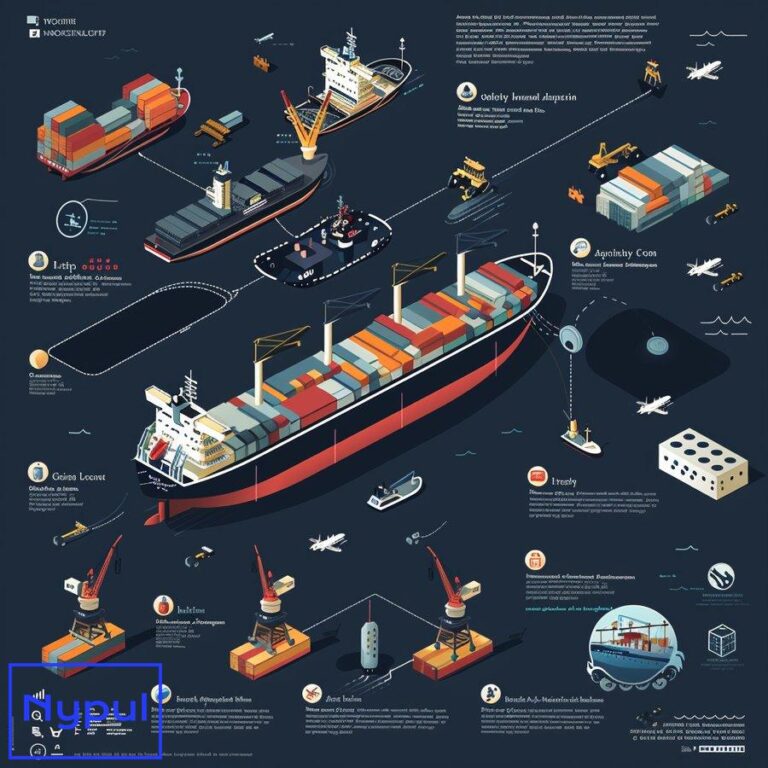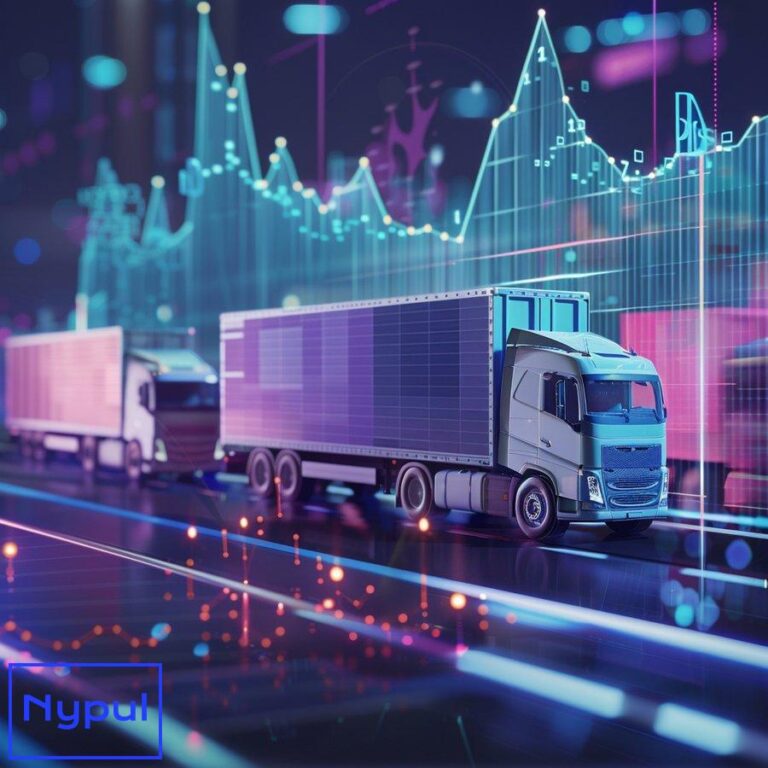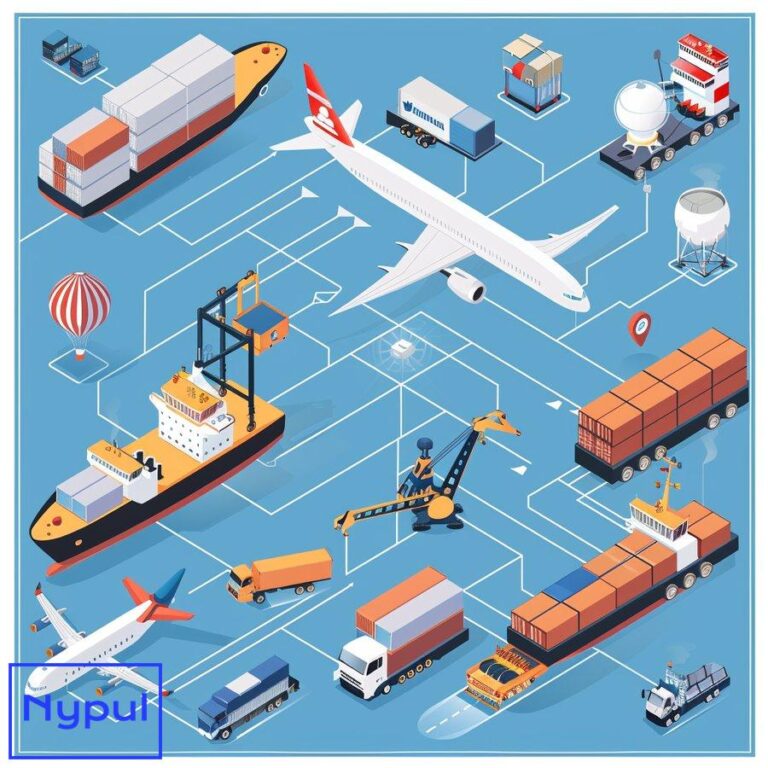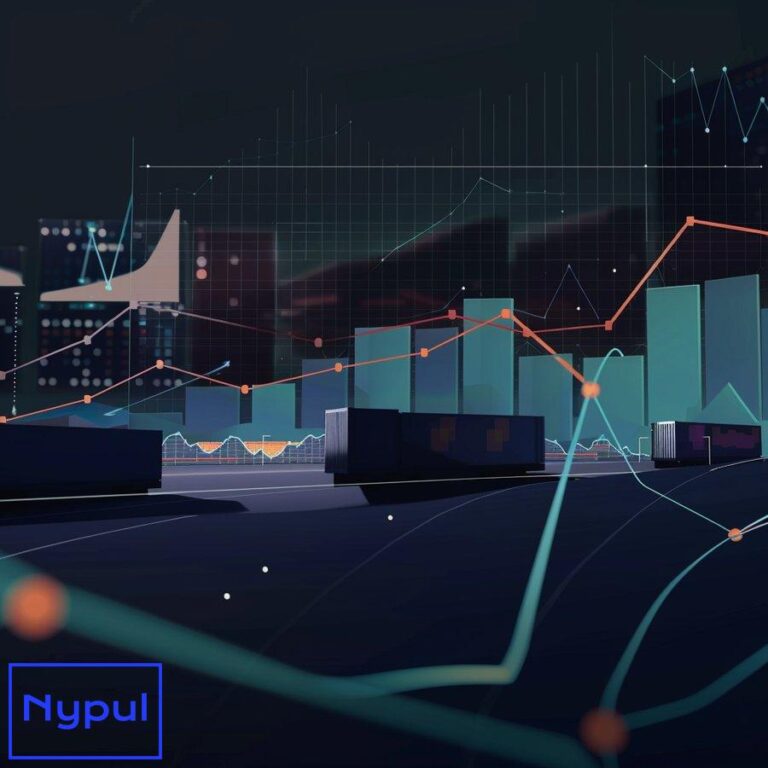What Is the Process of Port Planning
Why is strategic port planning crucial?
Strategic port planning plays a vital role in shaping the future of ports and their surrounding regions. Ports serve as critical nodes in global supply chains, facilitating the movement of goods and people across international borders. Without proper planning, ports risk becoming obsolete, inefficient, and unable to meet the evolving needs of the maritime industry.

Economic impact
Ports generate significant economic activity for their regions. A well-planned port can:
- Create jobs both directly at the port and indirectly through related industries
- Attract new businesses and investments to the area
- Increase tax revenues for local and regional governments
- Stimulate economic growth and development
For example, the Port of Los Angeles supports over 133,000 jobs in Southern California and generates over $39 billion in annual economic activity for the region. Strategic planning ensures ports can maximize their economic contributions over the long term.
Competitiveness
The maritime industry is highly competitive, with ports vying for shipping traffic and cargo volumes. Strategic planning allows ports to:
- Identify and capitalize on competitive advantages
- Invest in infrastructure and technologies to improve efficiency
- Develop new services and capabilities to attract customers
- Adapt to changing market conditions and industry trends
Ports that fail to plan strategically risk losing market share to more forward-thinking competitors.
Capacity management
As global trade volumes continue to grow, many ports face capacity constraints. Strategic planning helps ports:
- Forecast future demand and capacity needs
- Optimize existing infrastructure and operations
- Plan expansions and new developments to accommodate growth
- Balance capacity across different cargo types and terminals
Without proper capacity planning, ports may experience congestion, delays, and lost business opportunities.
Environmental sustainability
Ports have significant environmental impacts on air, water, and land. Strategic planning allows ports to:
- Set environmental goals and targets
- Implement green technologies and practices
- Mitigate negative impacts on local communities
- Comply with evolving environmental regulations
Environmentally responsible planning helps ports maintain their social license to operate and avoid costly regulatory issues.
Stakeholder alignment
Ports involve numerous stakeholders, including government agencies, terminal operators, shipping lines, local communities, and more. Strategic planning facilitates:
- Alignment of diverse stakeholder interests
- Clear communication of the port’s vision and goals
- Coordination of investments and development efforts
- Resolution of potential conflicts and competing priorities
By bringing stakeholders together in the planning process, ports can build consensus and support for their long-term strategies.
Risk management
Ports face various risks, from natural disasters to economic downturns. Strategic planning enables ports to:
- Identify potential risks and vulnerabilities
- Develop contingency plans and resilience strategies
- Diversify operations and revenue streams
- Adapt to changing global conditions
Proactive risk management through strategic planning helps ports weather uncertainties and maintain operational continuity.
In summary, strategic port planning is crucial for ensuring the long-term success, competitiveness, and sustainability of ports. It provides a roadmap for growth, guides investment decisions, and aligns stakeholders around a shared vision for the future. Ports that prioritize strategic planning are better positioned to navigate the complex and dynamic maritime industry landscape.
What are the key stages in the port planning process?
The port planning process typically involves several key stages that guide the development of a comprehensive and effective plan. While the specific approach may vary depending on the port’s size, location, and objectives, the following stages are commonly found in most port planning processes:
1. Initiation and scoping
This initial stage sets the foundation for the entire planning process. Key activities include:
- Defining the planning objectives and scope
- Identifying key stakeholders and their roles
- Establishing the planning team and governance structure
- Determining the timeline and budget for the planning process
- Outlining the expected deliverables and outcomes
2. Data collection and analysis
Gathering and analyzing relevant data is crucial for informed decision-making. This stage involves:
- Collecting historical data on port operations, cargo volumes, and financial performance
- Analyzing market trends and economic indicators
- Assessing the current state of port infrastructure and equipment
- Conducting environmental and social impact studies
- Evaluating the competitive landscape and benchmarking against other ports
3. Forecasting and demand analysis
Projecting future demand is essential for planning port capacity and infrastructure needs. This stage includes:
- Developing cargo volume forecasts for different commodity types
- Analyzing vessel size trends and their implications for port infrastructure
- Assessing potential new markets and trade routes
- Considering economic, technological, and regulatory factors that may impact demand
4. Vision and strategy development
Based on the analysis and forecasts, this stage focuses on creating a long-term vision and strategy for the port. Key elements include:
- Defining the port’s mission, vision, and strategic objectives
- Identifying key performance indicators (KPIs) and targets
- Developing strategic initiatives and action plans
- Aligning the port’s strategy with regional and national development plans
5. Infrastructure and capacity planning
This stage addresses the physical development needs of the port to meet future demand. Activities include:
- Assessing current infrastructure capacity and utilization
- Identifying infrastructure gaps and bottlenecks
- Developing plans for new terminals, berths, and storage areas
- Planning for intermodal connections (road, rail, inland waterways)
- Considering equipment needs and technological upgrades
6. Financial planning and feasibility analysis
Ensuring the financial viability of the port plan is critical. This stage involves:
- Developing capital investment plans and budgets
- Conducting cost-benefit analyses for major projects
- Assessing funding options and financing strategies
- Projecting future revenues and operating costs
- Performing sensitivity analyses and risk assessments
7. Environmental and social impact assessment
Addressing environmental and social concerns is increasingly important in port planning. This stage includes:
- Conducting environmental impact assessments
- Developing plans for environmental mitigation and protection
- Assessing social impacts on local communities
- Planning for community engagement and stakeholder management
- Ensuring compliance with environmental regulations and standards
8. Implementation planning
This stage focuses on translating the strategic plan into actionable steps. Key activities include:
- Developing a phased implementation timeline
- Assigning responsibilities and resources for each initiative
- Establishing project management and governance structures
- Creating monitoring and evaluation frameworks
- Planning for change management and stakeholder communication
9. Review and approval
Before finalization, the port plan undergoes review and approval processes:
- Internal review by port management and board of directors
- Stakeholder consultations and feedback incorporation
- Regulatory review and compliance checks
- Approval by relevant government authorities
- Final revisions and adjustments based on feedback
10. Monitoring and adaptation
Port planning is an ongoing process that requires regular monitoring and adaptation:
- Implementing performance monitoring systems
- Conducting periodic reviews of plan progress and effectiveness
- Adjusting strategies and actions based on changing conditions
- Updating forecasts and assumptions as new data becomes available
- Initiating new planning cycles as needed
By following these key stages, ports can develop comprehensive and adaptive plans that guide their long-term development and success. The process should be iterative and flexible, allowing for adjustments as new information and challenges arise.
Which essential components make up comprehensive port planning?
Comprehensive port planning encompasses a wide range of interconnected elements that collectively shape the port’s future development and operations. The following essential components form the backbone of a thorough and effective port plan:
1. Strategic vision and objectives
- Long-term vision statement
- Strategic goals and objectives
- Alignment with national and regional development plans
- Key performance indicators (KPIs) and targets
2. Market analysis and forecasting
- Historical cargo volume trends
- Market share analysis
- Competitive landscape assessment
- Future demand projections by cargo type
- Emerging market opportunities
3. Infrastructure and capacity planning
- Current infrastructure inventory and condition assessment
- Capacity utilization analysis
- Future capacity requirements
- Expansion and development plans for:
- Marine terminals
- Berths and quays
- Storage areas and warehouses
- Intermodal facilities
4. Equipment and technology planning
- Current equipment inventory and utilization
- Future equipment needs assessment
- Technology adoption strategies (e.g., automation, digitalization)
- Equipment replacement and upgrade plans
5. Operational efficiency and productivity
- Current operational performance metrics
- Benchmarking against industry standards
- Process improvement initiatives
- Labor productivity enhancement strategies
6. Intermodal connectivity
- Road and rail access assessment
- Intermodal facility development plans
- Last-mile connectivity improvements
- Integration with regional transportation networks
7. Environmental sustainability
- Environmental impact assessments
- Emissions reduction strategies
- Energy efficiency initiatives
- Waste management and recycling plans
- Green technology adoption
8. Safety and security
- Risk assessments and mitigation strategies
- Emergency response plans
- Cybersecurity measures
- Compliance with international security standards (e.g., ISPS Code)
9. Financial planning and economic impact
- Capital investment plans
- Revenue projections
- Operating cost forecasts
- Funding and financing strategies
- Economic impact analysis (jobs, tax revenues, regional growth)
10. Stakeholder engagement and community relations
- Stakeholder mapping and analysis
- Community engagement strategies
- Corporate social responsibility initiatives
- Public-private partnership opportunities
11. Land use and spatial planning
- Current land use analysis
- Future land requirements
- Zoning and development regulations
- Buffer zones and environmental protection areas
12. Human resources and workforce development
- Workforce needs assessment
- Training and skill development programs
- Succession planning
- Labor relations management
13. Regulatory compliance and governance
- Compliance with national and international regulations
- Governance structure and decision-making processes
- Risk management frameworks
- Quality management systems
14. Innovation and research
- Innovation strategy and roadmap
- Research and development initiatives
- Partnerships with academic institutions and industry
- Pilot projects and technology trials
15. Marketing and business development
- Marketing strategy and branding
- Customer relationship management
- New business development initiatives
- Value-added services planning
16. Resilience and adaptability
- Climate change adaptation strategies
- Business continuity planning
- Flexibility in infrastructure design
- Scenario planning for future uncertainties
Table: Key Components of Comprehensive Port Planning
| Component | Description | Importance |
|---|---|---|
| Strategic Vision | Long-term goals and objectives | Guides overall direction |
| Market Analysis | Demand forecasts and competitive assessment | Informs capacity planning |
| Infrastructure Planning | Physical development of port facilities | Ensures adequate capacity |
| Environmental Sustainability | Emissions reduction and green initiatives | Meets regulations and stakeholder expectations |
| Financial Planning | Investment plans and economic impact | Ensures financial viability |
| Stakeholder Engagement | Community relations and partnerships | Builds support and alignment |
These essential components are interconnected and should be considered holistically in the port planning process. A comprehensive plan addresses all these elements, ensuring that the port can develop in a balanced and sustainable manner while meeting the needs of its stakeholders and adapting to future challenges.
How do planners assess infrastructure needs and market demand?

Port planners employ a variety of methods and tools to assess infrastructure needs and market demand, ensuring that port development aligns with current and future requirements. This assessment process is critical for making informed decisions about capacity expansions, equipment investments, and operational improvements.
Infrastructure needs assessment
Current capacity analysis
Planners begin by evaluating the port’s existing infrastructure and its utilization:
- Berth occupancy rates
- Storage yard utilization
- Gate and intermodal facility throughput
- Equipment productivity and utilization rates
This analysis helps identify bottlenecks and capacity constraints in the current system.
Condition assessment
Regular inspections and evaluations of existing infrastructure are conducted to determine:
- Structural integrity of quays, berths, and buildings
- Remaining useful life of equipment and facilities
- Maintenance and repair requirements
- Compliance with current standards and regulations
Gap analysis
Planners compare current capacity and capabilities with projected future needs to identify gaps in infrastructure:
- Berth length and water depth requirements for larger vessels
- Storage area expansions for increased cargo volumes
- Intermodal capacity improvements for efficient hinterland connections
- Technology upgrades for improved operational efficiency
Phased development planning
Based on the gap analysis, planners develop phased infrastructure development plans that consider:
- Priority of improvements based on urgency and impact
- Available funding and financing options
- Construction timelines and operational disruptions
- Flexibility for future expansion and adaptation
Market demand assessment
Historical data analysis
Planners analyze historical cargo volumes and vessel traffic to identify trends and patterns:
- Cargo throughput by type (containers, bulk, break-bulk, etc.)
- Seasonal variations in demand
- Long-term growth trends
- Market share changes over time
Economic indicators
Key economic indicators are monitored to gauge potential impacts on port demand:
- GDP growth rates (local, national, and global)
- Industrial production indices
- Consumer spending trends
- International trade statistics
Trade flow analysis
Planners examine trade flows and patterns to identify potential growth opportunities:
- Origin-destination analysis of cargo
- Emerging trade routes and markets
- Changes in global supply chains
- Impacts of trade agreements and policies
Competitive analysis
Assessment of competing ports and alternative transportation modes helps understand the port’s market position:
- Benchmarking against similar ports
- Analysis of competing ports’ development plans
- Evaluation of modal shift trends (e.g., sea to air freight)
- Assessment of hinterland connectivity advantages
Stakeholder engagement
Planners engage with key stakeholders to gather insights on future demand:
- Shipping lines’ vessel deployment plans
- Terminal operators’ growth projections
- Shippers’ and freight forwarders’ logistics strategies
- Industrial development plans in the port’s hinterland
Forecasting techniques
Various forecasting methods are employed to project future demand:
- Time series analysis and trend extrapolation
- Econometric modeling
- Scenario planning and sensitivity analysis
- Expert opinion and Delphi techniques
Table: Infrastructure Needs and Market Demand Assessment Methods
| Assessment Area | Methods | Key Considerations |
|---|---|---|
| Current Capacity | Utilization analysis, performance metrics | Identify bottlenecks and inefficiencies |
| Infrastructure Condition | Inspections, structural assessments | Determine maintenance and replacement needs |
| Future Requirements | Gap analysis, phased planning | Align development with projected demand |
| Historical Trends | Time series analysis, growth rates | Identify long-term patterns and seasonality |
| Economic Factors | GDP, trade statistics, industrial indices | Correlate port demand with economic indicators |
| Competitive Landscape | Benchmarking, market share analysis | Assess port’s competitive position and threats |
| Stakeholder Input | Surveys, interviews, workshops | Gather insights from key market players |
| Demand Forecasting | Econometric models, scenario planning | Project future volumes under various conditions |
By combining these assessment methods, port planners can develop a comprehensive understanding of infrastructure needs and market demand. This integrated approach ensures that port development plans are well-grounded in data and analysis, balancing current operational requirements with future growth opportunities.
The assessment process is iterative and should be regularly updated to reflect changing market conditions, technological advancements, and evolving stakeholder needs. By maintaining a dynamic approach to infrastructure and demand assessment, ports can remain agile and responsive to the ever-changing maritime industry landscape.
What tools and methodologies are used in effective port planning?
Effective port planning relies on a diverse set of tools and methodologies to analyze complex data, model future scenarios, and make informed decisions. These tools help planners optimize port layouts, simulate operations, assess environmental impacts, and evaluate financial feasibility. Here are some key tools and methodologies used in modern port planning:
Geographical Information Systems (GIS)
GIS tools play a crucial role in spatial planning and analysis for ports:
- Land use mapping and zoning
- Environmental sensitivity analysis
- Intermodal connectivity assessment
- Site selection for new facilities
- Visualization of development scenarios
GIS allows planners to integrate various data layers and perform spatial analyses to optimize port layouts and understand geographical constraints.
Computer-Aided Design (CAD) and 3D Modeling
CAD software and 3D modeling tools are essential for detailed infrastructure planning:
- Terminal layout design
- Berth and quay wall engineering
- Equipment positioning and clearance analysis
- Visualization of proposed developments
- Integration with Building Information Modeling (BIM) systems
These tools enable precise design and help stakeholders visualize proposed changes before implementation.
Simulation and Modeling Software
Simulation tools allow planners to model complex port operations and test different scenarios:
- Berth allocation and vessel scheduling
- Yard operations and container movements
- Gate processes and truck flows
- Equipment utilization and productivity
- Intermodal operations and rail movements
Popular simulation software includes FlexSim, ARENA, and AnyLogic. These tools help optimize operations and identify potential bottlenecks before investing in physical infrastructure.
Forecasting and Statistical Analysis Tools
Various statistical and forecasting tools are used to project future demand and analyze trends:
- Time series analysis and trend projection
- Regression analysis and econometric modeling
- Monte Carlo simulations for risk assessment
- Bayesian networks for probabilistic forecasting
Software packages like R, Python, and specialized forecasting tools enable planners to develop robust demand forecasts and analyze historical data patterns.
Environmental Impact Assessment (EIA) Tools
EIA tools help evaluate the environmental consequences of port development:
- Air quality modeling software (e.g., AERMOD, CALPUFF)
- Noise propagation models
- Water quality and hydrodynamic modeling tools
- Habitat and biodiversity assessment software
These tools ensure that port planning considers environmental impacts and helps develop mitigation strategies.
Financial Modeling and Cost-Benefit Analysis Tools
Financial planning tools are crucial for assessing the economic viability of port projects:
- Discounted cash flow (DCF) models
- Internal rate of return (IRR) calculators
- Net present value (NPV) analysis tools
- Sensitivity analysis and scenario modeling software
Spreadsheet software like Microsoft Excel and specialized financial modeling tools are commonly used for these analyses.
Project Management and Scheduling Software
Project management tools help planners organize and track the implementation of port development plans:
- Gantt chart creators (e.g., Microsoft Project, Primavera)
- Critical path method (CPM) analysis tools
- Resource allocation and scheduling software
- Collaboration platforms for multi-stakeholder projects
These tools ensure efficient execution of complex port development projects.
Stakeholder Engagement and Decision Support Tools
Various tools facilitate stakeholder involvement and decision-making processes:
- Multi-criteria decision analysis (MCDA) software
- Stakeholder mapping and analysis tools
- Online survey and feedback platforms
- Visualization tools for public consultations
These tools help build consensus and incorporate diverse perspectives into the planning process.
Big Data Analytics and Artificial Intelligence
Emerging technologies are increasingly being applied to port planning:
- Machine learning algorithms for demand forecasting
- Predictive maintenance models for infrastructure
- Real-time data analytics for operational optimization
- Natural language processing for stakeholder sentiment analysis
These advanced tools can process large volumes of data to uncover insights and improve decision-making.
Risk Assessment and Management Tools
Risk analysis software helps planners identify and mitigate potential risks:
- Fault tree analysis tools
- Event tree analysis software
- Quantitative risk assessment (QRA) models
- Business continuity planning platforms
These tools ensure that port plans consider potential risks and develop appropriate mitigation strategies.
Table: Key Tools and Methodologies in Port Planning
| Category | Tools/Methodologies | Primary Functions |
|---|---|---|
| Spatial Analysis | GIS, CAD, 3D Modeling | Layout optimization, visualization |
| Operational Modeling | Simulation Software | Process optimization, capacity analysis |
| Forecasting | Statistical Analysis, AI | Demand projection, trend analysis |
| Environmental Assessment | EIA Tools | Impact evaluation, mitigation planning |
| Financial Planning | DCF, IRR, NPV Models | Economic feasibility assessment |
| Project Management | Gantt Charts, CPM | Implementation planning and tracking |
| Stakeholder Engagement | MCDA, Survey Platforms | Consensus building, decision support |
| Risk Management | QRA, Fault Tree Analysis | Risk identification and mitigation |
The effective use of these tools and methodologies requires skilled professionals who can interpret results and apply them to real-world planning scenarios. It’s important to note that while these tools provide valuable insights, they should be used in conjunction with expert judgment and stakeholder input to develop comprehensive and balanced port plans.
As technology continues to evolve, new tools and methodologies are likely to emerge, offering even more sophisticated approaches to port planning. Planners should stay informed about these developments and be prepared to integrate new tools that can enhance the planning process and lead to more efficient and sustainable port development.
How can ports integrate their plans with regional development?

Integrating port plans with regional development is crucial for creating synergies, maximizing economic benefits, and ensuring sustainable growth. Ports are not isolated entities but integral parts of larger economic and social systems. Effective integration requires collaboration, coordination, and alignment of objectives between port authorities, local governments, regional planners, and other stakeholders.
Alignment with regional economic strategies
Ports should align their development plans with broader regional economic strategies:
- Identify key industries and sectors targeted for growth in the region
- Develop port facilities and services that support these industries
- Collaborate with regional economic development agencies
- Participate in regional economic planning processes
For example, if a region is focusing on developing its automotive manufacturing sector, the port can plan for specialized ro-ro (roll-on/roll-off) facilities to support vehicle exports.
Transportation network integration
Seamless connectivity between ports and regional transportation networks is essential:
- Coordinate with regional transportation authorities on road and rail projects
- Participate in regional transportation planning committees
- Advocate for improved last-mile connections to port facilities
- Support the development of inland ports and dry ports to extend the port’s reach
The Port of Savannah’s Mason Mega Rail Terminal project is an excellent example of integrating port expansion with regional rail infrastructure improvements to enhance cargo movement efficiency.
Land use planning coordination
Ports must work closely with local and regional planners on land use issues:
- Participate in regional land use planning processes
- Advocate for buffer zones and compatible land uses around port areas
- Coordinate on the development of logistics parks and industrial zones
- Address potential conflicts between port expansion and urban development
The Port of Rotterdam’s Maasvlakte 2 expansion project demonstrates successful integration of port development with regional spatial planning, including environmental considerations and public access areas.
Environmental and sustainability initiatives
Ports should align their environmental strategies with regional sustainability goals:
- Participate in regional air quality improvement programs
- Collaborate on water quality and habitat conservation efforts
- Support regional renewable energy initiatives
- Contribute to climate change adaptation and resilience planning
The Port of Los Angeles’ Clean Air Action Plan, developed in coordination with regional air quality management districts, exemplifies this approach.
Workforce development and education
Ports can play a significant role in regional workforce development:
- Partner with local educational institutions on maritime and logistics programs
- Provide internship and apprenticeship opportunities
- Support STEM education initiatives in local schools
- Collaborate on job training programs for port-related industries
The Port of Seattle’s Maritime High School partnership is an innovative example of integrating port workforce needs with regional education initiatives.
Innovation and technology clusters
Ports can serve as catalysts for regional innovation ecosystems:
- Collaborate with universities and research institutions on maritime technology development
- Support the creation of innovation hubs and incubators focused on port-related technologies
- Participate in regional smart city initiatives
- Foster partnerships with technology companies for pilot projects
The Maritime and Port Authority of Singapore’s Maritime Innovation Lab demonstrates how ports can drive regional innovation in maritime technology.
Community engagement and social responsibility
Ports must actively engage with local communities and contribute to social development:
- Participate in community advisory committees
- Support local cultural and recreational initiatives
- Contribute to affordable housing and community development projects
- Provide public access and waterfront amenities where possible
The Port of San Diego’s Waterfront Development Program shows how ports can integrate community needs into their development plans.
Regional marketing and branding
Ports can collaborate with regional entities on joint marketing efforts:
- Participate in regional trade missions and investment promotion activities
- Develop coordinated marketing materials highlighting regional logistics capabilities
- Collaborate on regional branding initiatives
- Support regional tourism development efforts, especially for cruise ports
The Port of Miami’s collaboration with local tourism authorities in promoting the “Cruise Capital of the World” brand is a good example of this integration.
Disaster preparedness and resilience planning
Ports should be integral to regional disaster preparedness and resilience efforts:
- Participate in regional emergency response planning
- Coordinate on climate change adaptation strategies
- Contribute to regional critical infrastructure protection plans
- Support the development of regional business continuity plans
The Port of Houston’s involvement in regional hurricane preparedness planning demonstrates this integrated approach to resilience.
Funding and resource sharing
Integrated planning can lead to more efficient use of resources:
- Explore opportunities for joint funding of infrastructure projects
- Share data and information resources with regional planning agencies
- Collaborate on grant applications for federal and state funding
- Develop public-private partnerships that benefit both the port and the region
The Northwest Seaport Alliance, a partnership between the ports of Seattle and Tacoma, showcases how resource sharing can enhance regional competitiveness.
Table: Strategies for Integrating Port Plans with Regional Development
| Integration Area | Strategies | Benefits |
|---|---|---|
| Economic Alignment | Coordinate with regional economic plans | Enhanced economic impact |
| Transportation | Collaborate on intermodal projects | Improved connectivity and efficiency |
| Land Use | Participate in regional spatial planning | Optimized land use and reduced conflicts |
| Environmental | Align with regional sustainability goals | Improved environmental performance |
| Workforce Development | Partner on education and training programs | Skilled labor pool for port operations |
| Innovation | Support regional technology clusters | Enhanced competitiveness and innovation |
| Community Engagement | Participate in local development initiatives | Improved community relations and support |
| Marketing | Collaborate on regional branding efforts | Increased visibility and attractiveness |
| Resilience | Integrate with regional emergency planning | Enhanced disaster preparedness |
| Resource Sharing | Develop joint funding mechanisms | More efficient use of resources |
Successful integration of port plans with regional development requires ongoing communication, flexibility, and a willingness to compromise. Ports must balance their operational needs and growth objectives with broader regional goals and community interests. By taking a collaborative and integrated approach, ports can enhance their value proposition, secure stronger stakeholder support, and contribute more effectively to sustainable regional development.
What funding and implementation strategies support port development?

Funding and implementing port development projects require careful planning, innovative financing mechanisms, and effective execution strategies. As ports often involve large-scale, capital-intensive projects, a diverse range of funding sources and implementation approaches are typically employed.
Funding strategies
Public funding
Government funding remains a significant source for many port projects:
- Federal grants and loans (e.g., TIGER grants, INFRA grants in the U.S.)
- State and local government allocations
- Special purpose taxes or bonds approved by voters
- Port authority revenue bonds backed by future port revenues
Public funding is often crucial for large infrastructure projects that have broader economic benefits beyond the port itself.
Private sector investment
Private capital is increasingly important in port development:
- Terminal operator investments in equipment and facilities
- Public-private partnerships (PPPs) for terminal development and operations
- Private equity and infrastructure fund investments
- Shipping line investments in dedicated terminals
Private sector involvement can bring efficiency, expertise, and additional capital to port projects.
International financial institutions
Multilateral and bilateral development banks provide funding for ports, especially in developing countries:
- World Bank loans and grants
- European Investment Bank financing
- Asian Development Bank support
- Export credit agency financing
These institutions often provide favorable terms and technical assistance alongside funding.
Green and sustainable financing
Innovative financing mechanisms tied to environmental and social outcomes are gaining traction:
- Green bonds for environmentally friendly port projects
- Sustainability-linked loans with interest rates tied to ESG performance
- Climate adaptation and resilience funds
- Carbon credit financing for emissions reduction projects
These instruments align financial incentives with sustainability goals.
User fees and charges
Ports can leverage their own revenue streams to fund development:
- Cargo handling fees and tariffs
- Vessel docking and berthing charges
- Land lease revenues from port tenants
- Concession fees from terminal operators
Careful structuring of these fees can provide steady funding for ongoing development.
Alternative financing mechanisms
Innovative financing approaches are being explored:
- Tax increment financing (TIF) districts around ports
- Special purpose vehicles (SPVs) for specific projects
- Crowdfunding for community-oriented port projects
- Asset recycling (selling or leasing existing assets to fund new development)
These mechanisms can help ports access new sources of capital and spread risk.
Implementation strategies
Phased development
Breaking large projects into manageable phases:
- Allows for incremental funding and implementation
- Reduces initial capital requirements
- Enables learning and adjustment between phases
- Matches capacity expansion with demand growth
Phased approaches can make large projects more feasible and reduce risks.
Design-Build-Finance-Operate-Maintain (DBFOM) contracts
Integrated contracts that combine multiple project elements:
- Single point of responsibility for project delivery
- Potential for faster implementation and cost savings
- Transfer of certain risks to the private sector
- Alignment of long-term operational incentives
DBFOM contracts can be effective for large, complex port projects.
Modular and flexible design
Adopting adaptable infrastructure solutions:
- Use of standardized, modular components
- Designing for future expansion and reconfiguration
- Incorporating flexibility to accommodate changing technologies
- Planning for potential repurposing of facilities
Flexible designs can reduce long-term costs and improve adaptability to market changes.
Technology-driven implementation
Leveraging technology for efficient project delivery:
- Building Information Modeling (BIM) for integrated design and construction
- Digital twin technology for operational optimization
- Automated construction techniques (e.g., 3D printing, robotics)
- Advanced project management and collaboration platforms
Technology can improve project efficiency, reduce costs, and enhance quality.
Stakeholder engagement and communication
Ensuring buy-in and support throughout implementation:
- Regular stakeholder consultations and updates
- Transparent communication of project progress and challenges
- Community involvement in certain aspects of implementation
- Addressing concerns and mitigating negative impacts proactively
Effective engagement can reduce delays and conflicts during implementation.
Performance-based contracting
Structuring contracts around outcomes rather than inputs:
- Linking payments to achievement of specific performance targets
- Incentivizing contractors to find innovative solutions
- Focusing on long-term asset performance and maintenance
- Aligning contractor interests with port objectives
This approach can improve project outcomes and value for money.
Capacity building and knowledge transfer
Investing in local skills and expertise:
- Training programs for local workers and managers
- Partnerships with educational institutions
- Knowledge sharing with other ports and industry experts
- Building internal project management and technical capabilities
Capacity building supports sustainable long-term development and operations.
Risk management and contingency planning
Proactive approach to managing project risks:
- Comprehensive risk assessments and mitigation strategies
- Contingency budgets and timelines
- Regular risk reviews and adjustments
- Insurance and financial hedging instruments
Effective risk management can prevent cost overruns and project delays.
Table: Funding and Implementation Strategies for Port Development
| Strategy Type | Examples | Key Benefits |
|---|---|---|
| Public Funding | Government grants, bonds | Access to large capital pools |
| Private Investment | PPPs, terminal operator investments | Efficiency and additional expertise |
| Green Financing | Green bonds, sustainability-linked loans | Alignment with environmental goals |
| User Fees | Cargo handling charges, land leases | Steady revenue stream for development |
| Phased Implementation | Incremental capacity expansion | Reduced initial capital needs |
| DBFOM Contracts | Integrated project delivery | Risk transfer and efficiency |
| Flexible Design | Modular infrastructure | Adaptability to future needs |
| Technology-Driven | BIM, digital twins | Improved project efficiency |
| Stakeholder Engagement | Community consultations | Reduced conflicts and delays |
| Performance Contracting | Outcome-based agreements | Improved project outcomes |
Successful port development requires a tailored combination of these funding and implementation strategies, adapted to the specific context of each project. Ports must carefully evaluate their options, considering factors such as project scale, risk profile, market conditions, and regulatory environment. By leveraging diverse funding sources and innovative implementation approaches, ports can enhance their ability to deliver complex development projects efficiently and effectively.
How do ports address technological changes in their planning?
Ports must proactively address technological changes in their planning to remain competitive, efficient, and sustainable. The rapid pace of technological advancement in areas such as automation, digitalization, and clean energy is reshaping the maritime industry, presenting both challenges and opportunities for ports.
Automation and robotics
Ports are increasingly incorporating automation into their operations:
- Automated container handling equipment (e.g., automated stacking cranes, automated guided vehicles)
- Automated gate systems for truck entry and exit
- Robotic systems for cargo inspection and handling
- Autonomous vessels and their impact on port infrastructure
Planning considerations:
– Redesigning terminal layouts to accommodate automated systems
– Assessing the impact on workforce requirements and skills
– Evaluating the cost-benefit of automation investments
– Ensuring flexibility for future technological upgrades
The Port of Rotterdam’s Maasvlakte 2 terminal showcases how automation can be integrated into port planning from the ground up.
Digitalization and data analytics
Digital technologies are transforming port operations and planning:
- Port community systems for streamlined information exchange
- Internet of Things (IoT) sensors for real-time asset monitoring
- Big data analytics for operational optimization
- Blockchain for secure and efficient documentation processes
Planning considerations:
– Developing robust IT infrastructure and connectivity
– Implementing cybersecurity measures
– Training staff in digital skills and data analysis
– Integrating data-driven decision-making into planning processes
The Port of Hamburg’s smartPORT initiative demonstrates comprehensive integration of digital technologies in port planning and operations.
Clean energy and sustainability
Ports are adopting clean energy technologies to reduce environmental impact:
- Shore power (cold ironing) for vessels at berth
- Electric and hydrogen-powered port equipment
- Renewable energy generation (solar, wind) on port lands
- LNG bunkering facilitiesPlanning considerations:
- Assessing energy needs and potential renewable sources
- Designing infrastructure to support alternative fuels
- Integrating energy management systems
- Planning for the transition of existing equipment and facilities
The Port of Los Angeles’ Alternative Maritime Power program is a leading example of integrating clean energy technologies into port planning.
Artificial Intelligence and Machine Learning
AI and ML are being applied to various aspects of port operations:
- Predictive maintenance for port infrastructure and equipment
- Optimized berth allocation and vessel scheduling
- Intelligent cargo tracking and inventory management
- Automated customs and security processes
Planning considerations:
– Developing data collection and management strategies
– Investing in AI/ML expertise and partnerships
– Ensuring ethical use of AI and addressing potential biases
– Planning for the integration of AI-driven decision support systems
Singapore’s PORTNET system demonstrates the potential of AI in enhancing port efficiency and planning.
5G and advanced connectivity
Next-generation wireless networks are enabling new possibilities in port operations:
- High-bandwidth, low-latency communications for remote operations
- Enhanced real-time tracking and monitoring capabilities
- Support for augmented and virtual reality applications in maintenance and training
- Improved connectivity for autonomous vehicles and drones
Planning considerations:
– Assessing 5G infrastructure requirements and coverage
– Evaluating potential applications and use cases
– Addressing cybersecurity and data privacy concerns
– Planning for the integration of 5G with existing systems
The Port of Qingdao’s 5G-enabled remote control of gantry cranes showcases the potential of advanced connectivity in port operations.
Autonomous and electric vehicles
The shift towards autonomous and electric vehicles impacts port planning:
- Planning for charging infrastructure for electric trucks and port vehicles
- Designing traffic management systems for autonomous vehicles
- Assessing the impact on port gate operations and container yards
- Considering the potential for autonomous ship-to-shore transfer systems
Planning considerations:
– Forecasting the adoption rate of electric and autonomous vehicles
– Designing flexible infrastructure to accommodate evolving technologies
– Collaborating with vehicle manufacturers and technology providers
– Addressing regulatory and safety considerations
The Port of Rotterdam’s pilot projects with autonomous trucks demonstrate proactive planning for this technological shift.
3D printing and additive manufacturing
The growth of 3D printing could impact cargo volumes and types:
- Potential reduction in certain types of manufactured goods transport
- Increased movement of raw materials for 3D printing
- Opportunities for on-demand manufacturing at ports
Planning considerations:
– Assessing the potential impact on cargo forecasts
– Planning for potential 3D printing facilities within port areas
– Considering the implications for storage and handling equipment
– Evaluating new business opportunities in additive manufacturing logistics
The Port of Rotterdam’s additive manufacturing field lab is an example of ports exploring this technology’s potential.
Virtual and augmented reality
VR and AR technologies offer new possibilities in port planning and operations:
- Virtual simulation of port layouts and operations for planning purposes
- AR-assisted maintenance and repair of port equipment
- Enhanced training programs for port workers
- Improved visualization of development projects for stakeholder engagement
Planning considerations:
– Investing in VR/AR hardware and software
– Developing 3D models and digital twins of port facilities
– Training staff in the use of VR/AR technologies
– Integrating VR/AR into existing planning and operational processes
The Port of Antwerp’s use of VR for safety training demonstrates the practical application of these technologies in port environments.
Drones and aerial systems
Unmanned aerial vehicles are finding various applications in ports:
- Aerial surveying and mapping of port areas
- Security and surveillance operations
- Environmental monitoring and inspection
- Potential future use in small-scale cargo delivery
Planning considerations:
– Developing policies and procedures for drone operations
– Assessing airspace management requirements
– Integrating drone data into port management systems
– Considering privacy and security implications
The Port of Rotterdam’s use of aquatic drones for water quality monitoring showcases innovative applications of this technology.
Table: Technological Changes and Planning Considerations for Ports
| Technology | Applications | Planning Considerations |
|---|---|---|
| Automation | Container handling, gate operations | Terminal layout, workforce impact |
| Digitalization | Port community systems, IoT | IT infrastructure, cybersecurity |
| Clean Energy | Shore power, electric equipment | Energy infrastructure, transition planning |
| AI/ML | Predictive maintenance, optimization | Data strategy, AI expertise |
| 5G Connectivity | Remote operations, real-time tracking | Infrastructure requirements, use cases |
| Autonomous Vehicles | Electric trucks, autonomous transfer | Charging infrastructure, traffic management |
| 3D Printing | On-demand manufacturing | Cargo forecast impact, new facilities |
| VR/AR | Training, maintenance, planning | Hardware/software investment, digital modeling |
| Drones | Surveying, monitoring, security | Airspace management, data integration |
To effectively address technological changes in port planning, ports should:
- Establish a dedicated technology strategy and innovation team
- Regularly assess emerging technologies and their potential impacts
- Develop flexible master plans that can accommodate technological evolution
- Engage in pilot projects and partnerships to test new technologies
- Invest in workforce development to build necessary technical skills
- Collaborate with other ports, research institutions, and technology providers
- Ensure cybersecurity and data privacy are integral to all technology initiatives
- Develop key performance indicators to measure the impact of technological investments
- Create a culture of innovation and continuous improvement
- Engage stakeholders in the technology planning process to ensure alignment and support
By proactively addressing technological changes in their planning processes, ports can enhance their competitiveness, improve operational efficiency, reduce environmental impacts, and position themselves as leaders in the evolving maritime industry. The key is to remain flexible, forward-thinking, and committed to continuous innovation while balancing the need for long-term infrastructure investments with the rapid pace of technological change.

